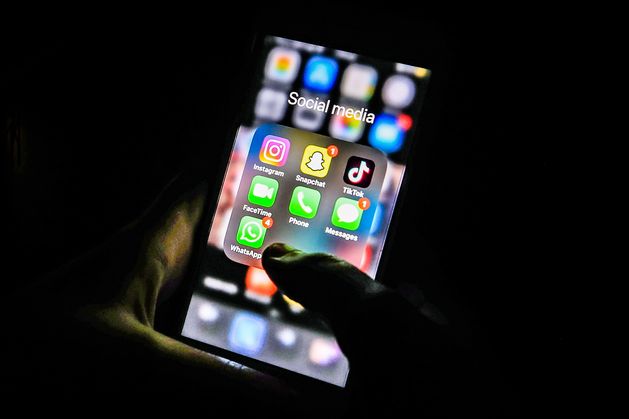The influencers, who are not being named, are operating in a number of sectors, including beauty and fashion, food, entertainment and sport. The letters are the first step in a compliance process.
The Competition and Consumer Protection Commission (CCPC) has also written to 18 companies who represent influencers, telling them to be aware of their obligations under the law.
Today’s News in 90 Seconds – April 23rd
The letters follow a Europe-wide sweep, launched last November, in which the social media posts of 576 social-media influencers were scrutinised. The investigation covered 22 EU member states plus Norway and Iceland.
As part of the operation, the CCPC says it “began a sweep of the influencer sector in Ireland”.
“As part of this activity, CCPC Authorised Officers reviewed social media accounts across a range of sectors including beauty and fashion, food, entertainment and sport to ensure traders were not misleading consumers on their commercial intent,” it said.
“As an enforcement body, we cannot provide any further details at this time.”
The findings were that while nearly all (97pc) of the influencers were posting commercial content on social media platforms, only one in five systematically told the public it was, in fact, advertising.
More than one-third (38pc) did not use the platform labels that reveal the content is commercial, such as the “paid partnership” option on Instagram. Those influencers used a different wording, such as “collaboration” (16pc), “partnership” (15pc), or just thanked the partner brand (11pc).
Following the sweep, 358 influencers were contacted for further investigation, and were contacted by national authorities to ask them to obey the rules. Twenty-six of these, or 7pc of the Europe-wide total, were contacted by the CCPC.
The competition authority, which says its work is ongoing, highlighted areas of potential concern to the influencers that were identified during the sweep.
“Influencers were reminded of their obligations under consumer protection law in relation to labelling of content and were encouraged to review their social media channels and to take the appropriate action to rectify any issues that they identified,” the CCPC said.
The letters to the 18 companies were intended to ensure they, and the influencers they represent, were aware of their obligations under consumer protection law.
“Where the CCPC finds acts or practices that may mislead consumers through the influencer advertising and marketing industry, we will engage with the stakeholders concerned and take enforcement action as necessary,” it added.
“The CCPC has a wide range of enforcement powers to secure compliance with consumer protection law in Ireland. These include undertakings, compliance notices, prohibition orders and prosecution.”
The Europe-wide sweep of posts found that influencers were active on several different social media platforms. Of the 576 influencers, almost all had posts on Instagram, 334 were on TikTok, 224 on YouTube, 202 on Facebook, 82 on X, 52 on Snapchat and 28 on Twitch. The sweep found that 119 influencers were considered to be promoting unhealthy or hazardous activities such as junk food, alcoholic beverages, medical or aesthetic treatments, gambling, or financial services such as crypto trading.
The CCPC declined to say how many of those 119 were based in Ireland.
European consumer law says commercial posts needs to be transparent. Influencers should not mislead consumers with false information about the products or services they are promoting, and any post that earns revenues or other benefits must be disclosed as an advertising activity.
EU law also says that influencers who sell products or services of their own have the same obligations as online shops, such as providing customers with legal guarantees and withdrawal rights.
Last October, the CCPC and the Advertising Standards Authority of Ireland published new guidelines on influencer advertising and marketing. This was to help them correctly label content they produce or share on behalf of a brand.
The guidelines say that labels flagging commercial content “should be clearly positioned using an appropriate colour that stands out from the background and in a large font size so that they are instantly visible to consumers”.

